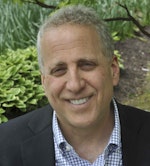The fee-for-service practice: Create the practice YOU want to work in
Remember in dental school when you learned all you needed to know to run a business, kind of like a mini-MBA course of study? Yeah, me neither!
Back in 1983, we had several semesters of oral health care delivery (OHCD), and this was supposed to educate us in the different modalities of dental offices at the time. Since we were more concerned about finishing our requirements (10 crowns, two dentures, etc.), OHCD was barely a blip on our radar screen. Consequently, the day we graduated we were equipped with minimal skills and basically no business knowledge.
Make no mistake about it, Dentistry is a business. Whether you’re working in an HMO clinic, a corporate-run group practice, or a solo practitioner fee-for-service (FFS) practice, your success directly correlates with your business sense and attention to all the numbers that make up the bottom line.
As I have stated in my previous articles, the four keys to creating a satisfying and profitable FFS practice are:
- A sincere interest in creating and enhancing relationships with your patients,
- A very thorough budget and goal-setting system,
- A superstar staff that reflects your office philosophy, and
- A rigorous CE regimen so that you can provide the highest level of dentistry possible.
In my last article I discussed the first of these four—how creating strong relationships builds trust and respect that translates into more treatment plan acceptance, as well as daily job satisfaction.
What kind of practice do you want?
Now for the second key--running a business. It all comes down to knowing your numbers. I’ll stress this over and over in this column because it’s the difference between operating in the dark, which contributes to stress and floundering, versus operating from the strength and confidence that you’re in charge of your numbers, your profits, and your practice.
There’s a philosophy behind designing a business that works for you as an individual. and why knowing your numbers can be so powerful. I’ll start with the basics: what kind of practice do you want to have? If you could design your perfect work environment and your perfect day, what would that look like?
Sit down in a quiet environment, take a step back, and take an honest, hard look at yourself and your practice. What procedures do you enjoy, and which ones would you be happy to never do again? I originally thought I’d be all things to all people, but I soon realized that I was surrounded by excellent specialists. Therefore, I refer out extractions, placing implants, and molar endo.
My best buddy from dental school, who’s a GP, loves surgery, so he places implants but does very little ortho. Once you come up with the list of procedures you enjoy, be sure to learn everything you can about those procedures. Take as much CE as you can to get as good as you can.
What about your workday? How many days a week do you want to work? Dentistry, especially when you pay extreme attention to excellence, can be very physically demanding. Working five or six days a week is the quickest route to professional burnout that I know.
Are you a morning person who starts at 6 a.m., or would you rather sleep in and start later? You can create the perfect schedule and mix of service procedures that keeps you energized, and most importantly, happy!
While we’re on the subject, when you’re designing your individual schedule and practice, I encourage you to work from the inside/out as opposed to the outside/in. This mean that many dentists who are starting out look to see what their colleagues are doing and use that as a template for their practice.
Here's what worked for me
When I started, most dentists were working five or six days a week from 8 a.m. to 5 p.m., some evenings, and most Saturdays. I copied their schedules and their fees. That is working from the outside/in. After several years of this treadmill and not being able to pay my bills, I decided to tailor my practice to my individual needs.
I cut out Saturdays and evenings so I could be with my family, and went from 7 a.m. to 3 p.m. When you work from the inside/out, the result is a business model that reflects your individual style and vision and is better poised for success.
Another important business concept is how you pay yourself. For the first 10 years of practice, I used the “what’s leftover” principle. You know that one, where you sit at your desk at the end of the month, with your pile of bills and the collection number for that month. You pay all your bills (if there’s enough money), and whatever is left over is yours.
After 10 years, I was in debt with no retirement savings and no surplus cash account. Something had to change. Thanks to Frank Spear and a dynamite consultant, I learned the value of creating and sticking to a budget that includes both your personal expenses and business expenses.
To be in control of your numbers and your practice, you must develop a budget that includes your salary so that you’ll be paid like every other employee. If you can’t pay yourself along with your bills consistently each month, you’re not operating a healthy business.
Next, I’ll get down to the nitty gritty of developing a realistic budget that puts you in control of your numbers. Once you incorporate this into your practice, I guarantee that your stress level will plummet, and your joy will increase. OK, maybe I can’t guarantee it, but I do guarantee that it beats operating in the dark.
Editor's note: This article appeared in the May 2024 print edition of Dental Economics magazine. Dentists in North America are eligible for a complimentary print subscription. Sign up here.
Robert S. Minch, DDS, is a graduate of University of Maryland Dental School and has enjoyed a fee-for-service practice focusing on cosmetic and complete dentistry in Baltimore, Maryland, for 39 years. He is a visiting faculty member at Spear Education and teaches Dental GPR residents at Johns Hopkins Hospital. Additionally, he has created numerous study clubs. He can be reached at [email protected].









